|
| |
Emerald of the Neches
The Chronicles of Beaumont, Texas from
Reconstruction to Spindletop
A previously unpublished
manuscript that has recently been published on Amazon in two formats: Kindle
eBook and Paperback.
Link to Amazon
https://www.amazon.com/dp/B0BLLYYHH8
Description
A typewritten manuscript written by W. T.
Block, written over a period of 4 years ending in 1980 regarding the history of
Beaumont, Texas.
The manuscript was never published before this current release.
The book is a raw scanned copy of the original typewritten pages
creating a "print replica" in Kindle's terminology.
A handwritten note by WT on the inside of the front cover stated:
"This long typescript represents four
long years of my life. Don't burn it. If no one in the family wants it,
please give it to the Lamar University Library."
In my mind, not publishing it would be the
equivalent of burning it.
I will never forget the
first time I opened the manuscript, held one of the pages in my hand, and
wondered "What is that texture I am feeling?" The texture was caused by the
impact of the typewriter head striking the paper and WT typed on both sides
of the paper.
William T. Block III
Son of W. T. Block
Introduction
Here is the beginning of the "Introduction" written by WT:
For some years now, the editor has been
faced with the dilemma of completing his original intent � to write a sequel
to his �History of Jefferson County, Texas from Wilderness to
Reconstruction,� in order that that county�s nineteenth century history
might be preserved up to and including the famed discovery at Spindletop. In
lieu of writing, he has opted instead to reproduce a few hundred newspaper
articles which were published between 1865 and 1905.
As the census figures of Beaumont and Jefferson County during those years
reveal, the history of the county until 1895 increasingly becomes the
history of Beaumont, that city�s population always comprising from
two-thirds to three-fourths of the county�s inhabitants. After 1865, Sabine
Pass never regained the population or status it had attained by 1861, the
Civil War having delivered a fatal blow to the early community. And the
brief period of prosperity that town enjoyed as a lumber port around 1900
was soon negated by the building of the Port Arthur Ship Channel and other
seaports within the county.
The reader may question why the editor chose to reproduce only newspaper
articles, knowing, as he does, that that medium of communication does and
will always contain an irreducible margin of historical error. There are
also city and county minutes, deeds, and census records, etc., but little
social and economic history can be derived from these. The truth and
principal reason is �that almost nothing else, including local newspapers as
well, has survived. In fact, one might easily surmise that Jefferson
Countians of the last century was never inclined to write memoirs, diaries,
etc., since the surviving accounts were written almost always, but not
entirely, by outsiders�visitors and newspaper correspondents. The unknown
variable is what quantity of such records might have been written, but later
were destroyed by fire, hurricane, willful destruction, or by time itself.
The surviving newspapers of this county from the 1870�s consists of perhaps
twenty issues, mostly in the custody of Mr. Chilton O'Brien of Beaumont. The
first volume of the Enterprise, Nov. 1880, to Nov. 1881, remains intact.
From the latter date, no local newspapers survived until 1897, of which year
many issues of Port Arthur News and Herald and the Sabine Pass News still
exist. The next issues of either the Beaumont Enterprise or Journal begin in
1898. Because of this sixteen-year gap, the editor was forced to seek
out-of-county sources, principally the issues of the Galveston Weekly and
Daily News, which publications were printed simultaneously beginning in
1875, and fortunately have managed to escape fire, time, hurricanes, or
similar fates.
�Emerald of the Neches� is not intended to be read like a novel or even like
most history books, although chapters or parts within it might be read and
enjoyed in such a manner. It is intended as a resource book for local
historians, genealogists, etc.
First Pages
To provide an example of
what the book looks like inside, the following images are the first few pages of
the manuscript as they were originally scanned:
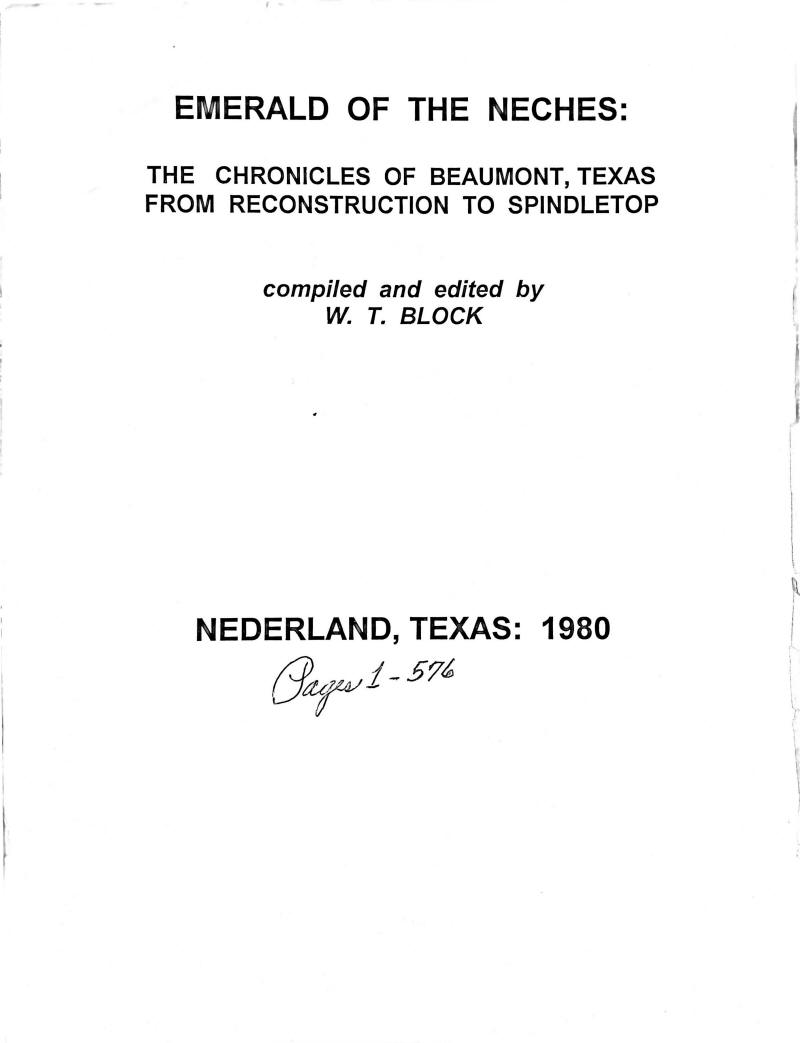
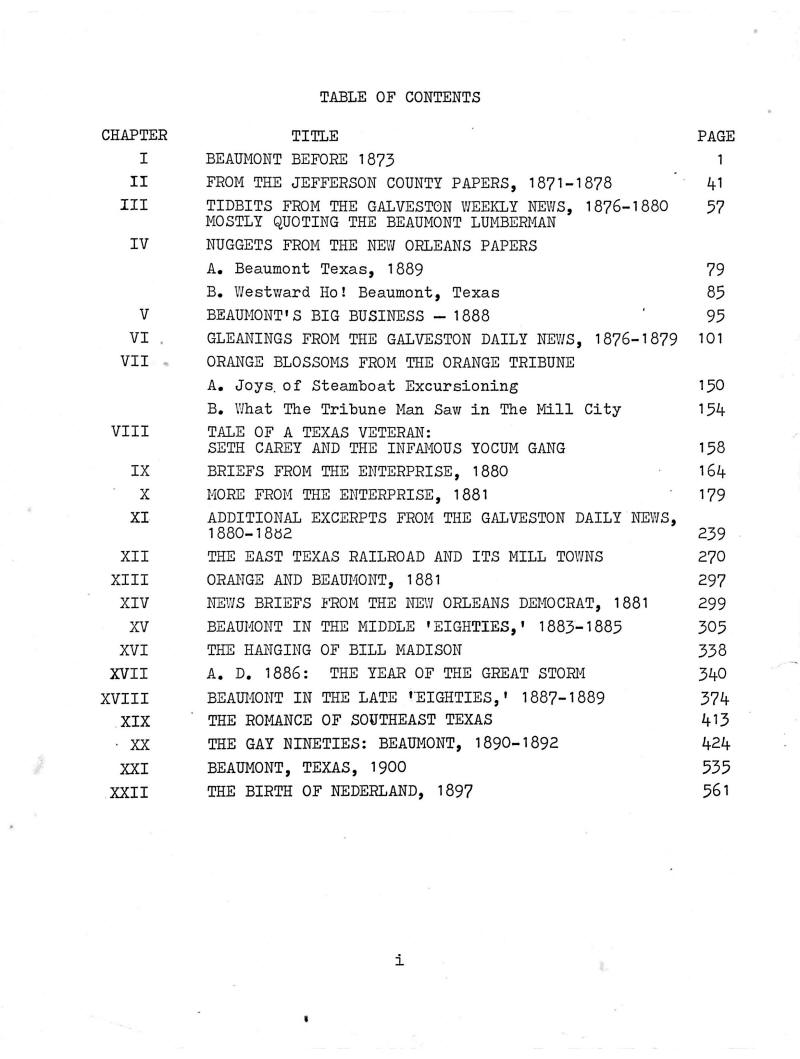
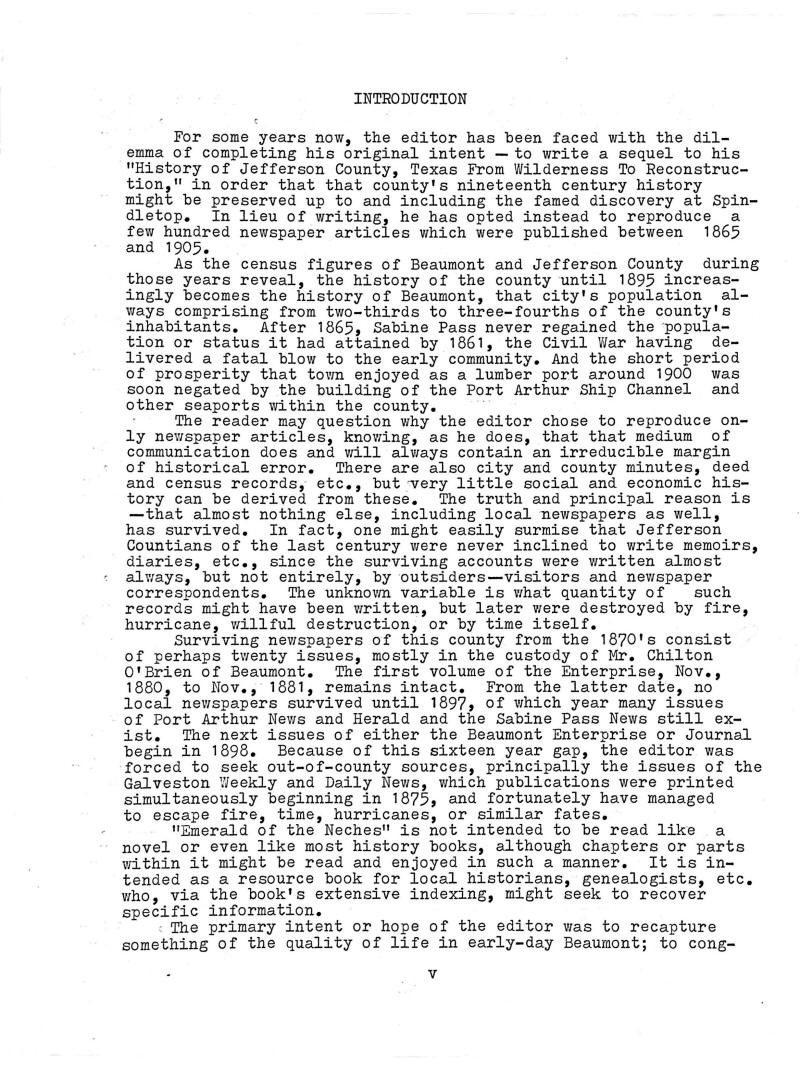
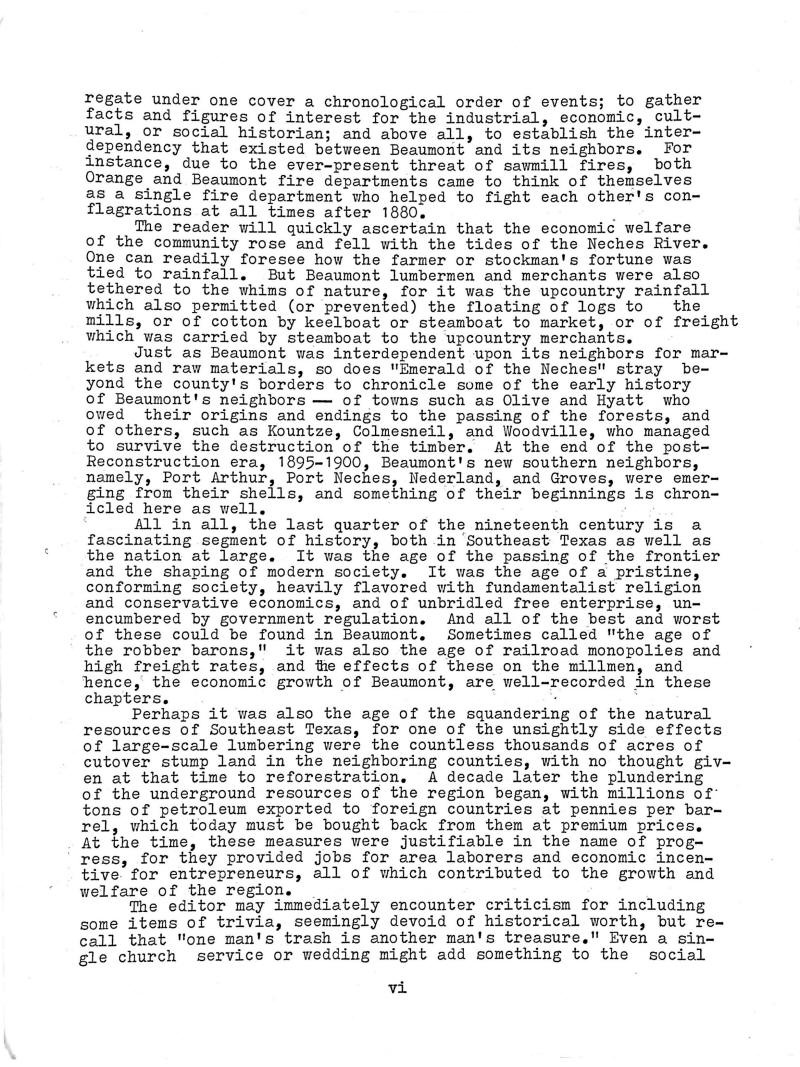
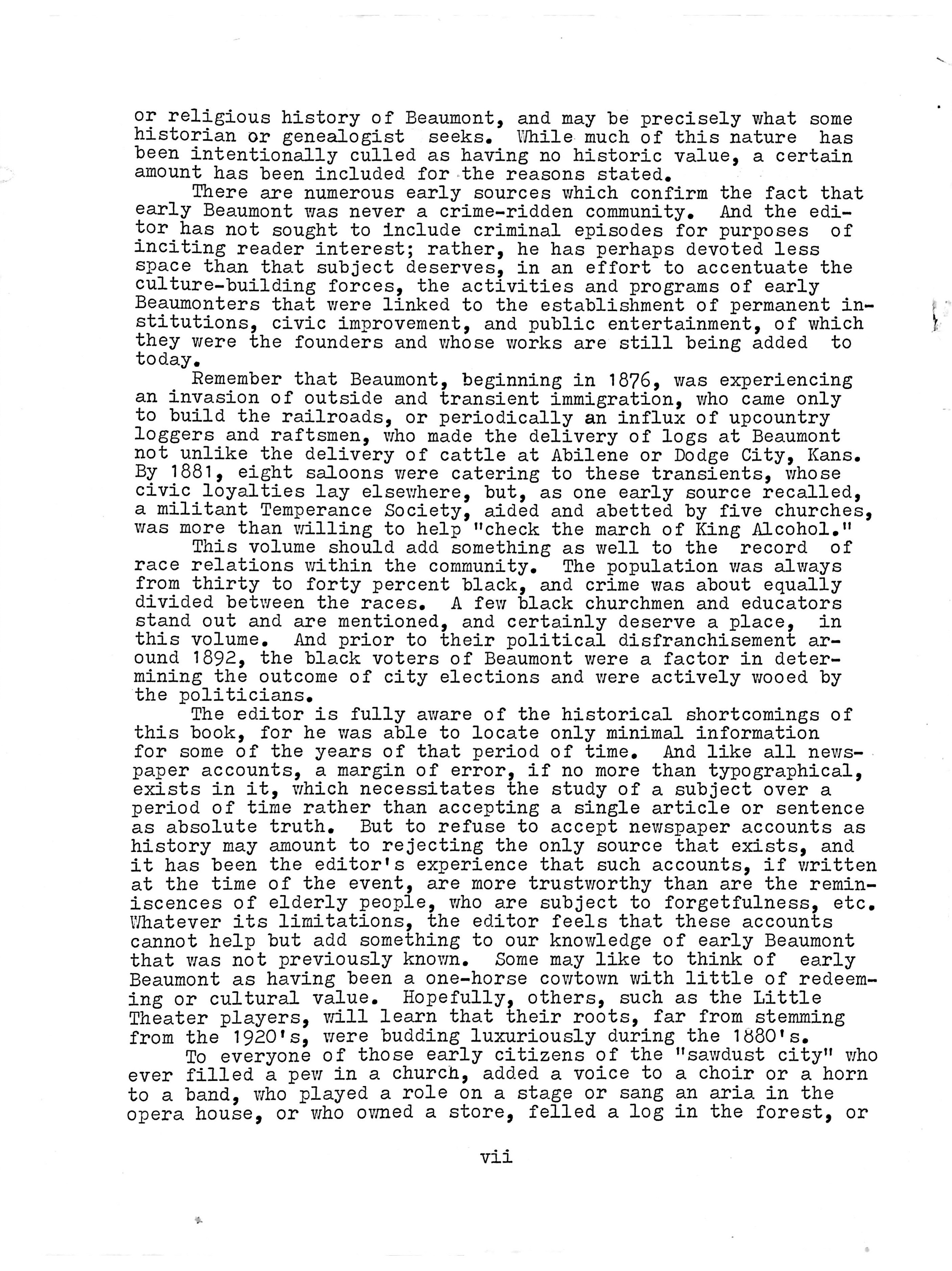


|
